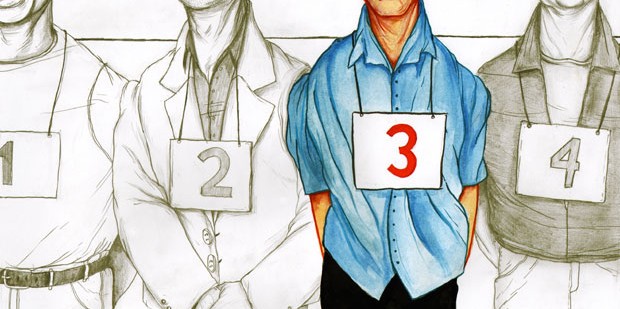Harnessing the current scientific consensus on the neuroscience of memory, CLBB recently contributed to a fundamental shift in the treatment of eyewitness identifications in Massachusetts courtrooms. CLBB partnered with the American Psychological Association to submit an Amicus Brief to the Massachusetts Supreme Judicial Court which outlined the latest neuroscientific understanding of eyewitness memory.
The brief addressed the misconception that human memory may work like a video camera and rejected the notion that witnesses who are highly confident in their identifications are therefore necessarily reliable. It outlined research demonstrating that a witness’s viewing of the same suspect in multiple identification procedures lowers the reliability of subsequent identifications and research regarding the effect of stress on the ability to recall past events. The Court embraced the core arguments presented in the Amicus brief, namely that these scientific principles regarding the limits of eyewitness identification are so well established that in appropriate cases, juries should be explicitly instructed about these limitations.
In its January 2015 decision, The SJC relied heavily upon a report submitted by the Study Group on Eyewitness Evidence, which included CLBB Faculty member and former Federal District Court Judge Nancy Gertner. Although the court affirmed both convictions on alternate grounds, the SJC opinion will change the law of eyewitness identification going forward. The opinion provided interim model jury instructions for use by trial judges until the SJC can formally revise its model jury instructions after a period of notice and comment.
Read about the Supreme Judicial Court’s decision in the Boston Globe coverage:
The state Supreme Judicial Court on Monday issued updated instructions that judges should give to jurors to help them assess the reliability of eyewitness testimony.
“The accuracy of an eyewitness identification is often the critical issue in a criminal case, the difference between a conviction and an acquittal,” wrote Chief Justice Ralph D. Gants in an opinion explaining the new instructions.
The opinion was issued in the case of Jeremy D. Gomes, who was convicted on charges that he slashed another man’s face with a boxcutter as the man sat in a vehicle in Pittsfield in September 2011.
Gomes appealed, arguing the trial judge erred in declining to provide jury instructions on eyewitness identification that his lawyer proposed, which were based largely on instructions recently adopted in New Jersey courts.
Gomes’s proposed instructions advised that human memory does not function like a video recording that a person can replay to recall what happened, a witness’s confidence level in making an identification does not always indicate accuracy, high levels of stress can reduce the likelihood of accuracy, information from other witnesses or outside sources can increase a witness’s confidence, and viewing the same person during multiple identification procedures can increase the risk of misidentification, Gants wrote.
In Monday’s ruling, the SJC upheld Gomes’s conviction on charges of mayhem and breaking and entering into a vehicle at night with the intent to commit a felony, finding the trial judge did not err in declining Gomes’s request, in part because his lawyer presented no expert witnesses to support the principles outlined in the proposed instructions.
However, Gants wrote, after reviewing the case along with an SJC study group report on eyewitness evidence that was completed in 2013, the high court has decided to issue a new template for judges to use when instructing jurors on eyewitness identification.
The provisional instructions are to be used immediately, but the SJC will solicit public comments before adopting an official model.
The SJC instructions include a warning that a witness’s expressed certainty may not indicate accuracy, especially when the witness did not express the same level of certainty when first making the identification.
The template also includes commentary on the complexity of recalling past events, the effect of stress on eyewitness identification, the length of time that elapsed between a crime and a person being identified, and issues associated with having a witness view a suspect multiple times during identification procedures.
In addition, the instructions allow jurors to consider whether witnesses were exposed to descriptions given by others, including police officers, which “may inflate the witness’s confidence in the identification.”
While judges in Massachusetts have advised jurors for decades on factors that may affect the accuracy of eyewitness identifications, the new instructions will “provide juries with more comprehensive guidance to evaluate and weigh” such testimony, Gants wrote.
Elizabeth A. Lunt, president of the Massachusetts Association of Criminal Defense Lawyers, said the ruling will help make jurors aware of scientific principles regarding eyewitness identifications. “This has been an issue for years and years,” Lunt said. “Jurors tend to believe eyewitness identification — ‘I’ll never forget that face’ ” — but researchers have highlighted the “difficulties people have making identifications, particularly under pressure.”
Jake Wark, a spokesman for Suffolk District Attorney Daniel F. Conley, said Suffolk County began taking steps years ago to ensure that eyewitness testimony is reliable. “We’re still digesting the decision and its provisional jury instructions, but we note that several of its recommendations have been in place for more than a decade in Boston and Suffolk County,’’ Wark wrote in an e-mail.
“Our policies for gathering and using accurate eyewitness identifications represent the gold standard,” he said. “Naturally, we’re always looking to make our evidence stronger, but eyewitness evidence is very familiar ground for police and prosecutors in Boston and Suffolk County.”



